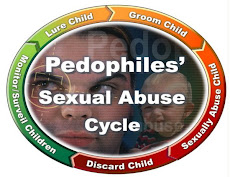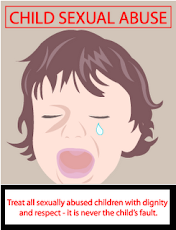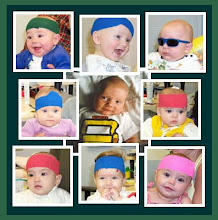DR WIDODO JUDARWANTO
Yudhasmara Foundation
JL TAMAN BENDUNGAN ASAHAN 5 JAKARTA PUSAT, JAKARTA INDONESIA 10210
PHONE : (021) 70081995 – 5703646
email : judarwanto@gmail.com,
http://pedophiliasexabuse.blogspot.com/
The pornography debate is one that has gone on for years, and will no doubt continue for years to come. Should it be legal? What constitutes obscenity? Is there a difference between erotica and hard core material? The answers are not simple ones, and there is no clear consensus on what is and is not obscene. The only part of the pornography debate where there is a consensus is the abolition of any kind of pornographic material involving children. It is a form of child abuse and it is wrong.
To most of us, pornography is a film or a magazine where sexual acts between two consenting adults are depicted. However, there is a whole population of people out there who derive sexual gratification from seeing young children in pornographic material. To properly combat this form of child abuse, those who are involved at each stage of the process must be targeted and punished.
Crimes against children are the most horrendous acts of all. The use of children in pornographic material to serve the sexual desires of anyone is disgusting. And it is a crime. These acts cannot be tolerated. Legislation was finally adopted to make possession illegal. It was a long time coming. Most Canadians believe that any involvement by a person in this should be punished. Any behavior or material which advocates the abuse of children should be illegal. Art cannot be a defense to this kind of material. It only serves as legitimization for pedophiles, and this leads to more abuse. Artists have a responsibility to society, and they cannot produce whatever they want. There must be limits.
Law enforcement agencies need to take an offensive approach in the battle against child pornography. The new laws should help ensure that child pornography will not become a bigger problem than it already is. But any child victimized in this way is one too many. The mere thought of young children being used and manipulated in these ways is revolting to most. There can never be too much protection for our children.
PREVIOUS LAW
Until August of 1993, it was not a crime to possess this kind material in Canada. Laws were aimed at the producers and distributors of the material. Offenses included producing, distributing mailing obscene materials and producing obscene performances. It did not specifically deal with the issue of the use of children in pornography. The word "pornography" was not even mentioned in the Criminal Code. It was covered by "offenses tending to corrupt morals," and was referred to as "obscene" material. Obscene was defined as the "undue exploitation of sex" or the "undue exploitation" with images of crime, horror, cruelty or violence. The maximum penalty for these various offenses was 2 years.
Other offenses included in the Criminal Code deal with the prohibition of the importation of obscene material into Canada. It is illegal to mail obscene material. Written material describing the sexual use or exploitation of children is also illegal. Written material urging sex with children is forbidden.
THE BADGELY (1984), FRASIER (1985) AND ROGERS (1990) REPORTS
In 1984 when the Badgely Report was released, it sent a shockwave through Canada. It was one of the first comprehensive studies of the sexual abuse of children in Canadian society. The results were astounding. It reported that one half of all girls are victims of unwanted sexual acts, and one out of every three boys are victimized at least once in their lives. Among other things, the report discussed child pornography. It reports that while the child pornography market was relatively small (between 1979 and 1981, 5236 pieces of child pornography were seized), the problem was a serious one.
The Badgely report, like the Frasier and the Rix Rogers reports, found that Canadian law in the area of child pornography was seriously lacking. They proposed that the government create laws to specifically deal with child pornography, and that everyone involved be punished including those who possessed such material. Stronger sentences were also recommended.
R. v. BUTLER
In 1992, the Supreme Court of Canada upheld the Criminal Code definition of obscenity. They identified what they considered to be the three types of pornography: 1.) pornography with violence; 2.) pornography without violence that is degrading or dehumanizing; and 3.) pornography that is neither degrading or violent. The third category is "legal" pornography, however the exception was pornography that involves children. The court said that any pornography which uses children qualifies as the undue exploitation of children, and is therefore obscene. The provisions on the prohibition of written material were also upheld by the Supreme Court of Canada.
CURRENT LAW
The law took ten years to change, and two previous attempts failed despite the fact that the Badgley Report (1984), the Frasier Report (1985) and the Rogers Report (1990) all recommended that changes be made to the Criminal Code to address children in pornography. One wonders why it took so long.
As it now stands, there is a possible five-year sentence for possessing child pornography. It is also an offence to possess written materials that advocate having sex with children. There is a ten-year maximum for anyone who produces (makes, prints, publishes, etc.) or distributes or sells child pornography. Also, those people who try to coerce young people into being a part of a pornographic item are liable to a term of ten years. These changes are very similar to those proposed in the mid 1980's by the Badgely and Frasier Reports.
Child pornography refers to,
(a) photograph, film, video or other visual representation, whether or not it was made by electronic or mechanical means (computer generated images)
(i) that show a person who is or who is depicted as being under the age of 18 years and is engaged in or is depicted as engaged in explicit sexual activity, or
(ii) the dominant characteristic of which is the depiction, of a sexual purpose, of a sexual organ or the anal region of a person who is under the age of eighteen years; or
(b) any written material or visual representation that advocates or counsels sexual activity with a person under the age of eighteen years This definition includes situations where adult models are used to portray children. Some feel that this definition is too vague because it does not define what constitutes explicit sexual activity. For example, could the movie, "The Boys of St. Vincent," which is based on the abuse of children by priests in orphanages be considered pornographic? Recently an artist was arrested for possessing and making pornographic materials. The materials were his paintings. Eli Langer painted depictions of a young boy being sodomized by an older man, "a naked girl straddling the neck of an adult and a very erect man who lies on the bed" (Kate Taylor, 1994), and interpretations of the deaths of Leslie Mahaffy and Kristen French. The gallery showing his work announced his paintings by stating that Langer was exploring the phenomenon of intimacy where it exists without the compensation of social or cultural consent.
It is difficult to imagine this kind of crime being a problem in a small town like London, Ontario, but it is. Just recently, two men pleaded guilty to possessing child pornography, making obscene material, invitation to sexual touching, etc. Over 25 others, including a former municipal politician and a school principal, have been charged (one of the accused is HIV positive, and his victim tested positive as well). The two ringleaders, Gary Gramlick and Edward Jewell were discovered to be making pornographic movies in their homes when a bag of videotapes was found in a local river. The tapes were turned over to the police who in turn identified Gramlick and Jewell. It seems the two men tried to destroy the tapes when the new child pornography laws came into effect. Another 100 tapes were discovered in their apartments. The victims were all boys, many of which were street kids whose home lives were lacking. They were paid up to $50 a session.
TYPES OF CHILD PORNOGRAPHY
Child pornography, or "kiddie porn" as it is often called, can be broken down into two major types: erotica and pornography. Child pornography is that which is prohibited outright by law. It is some type of visual depiction of a child engaged in any form of sexual behavior.
Types of pornography are:
- explicit photographs
- videotapes
- films
- magazines
- computer disks (this has become very difficult for police with the Internet that allows people to - - - obtain almost anything from almost anywhere)
Child erotica refers to material relating to children that functions as some kind of sexual instrument. This kind of material may not be illegal to have because it may only have a significant meaning to the pedophile. Some items included here are:
- toys/games
- books/drawings
- letters
- fantasy writing
- souvenirs
- ordinary photographs
Child pornography can be broken down further.
It can be either homemade or it can be commercially produced. Whichever method is used, the market is very secretive. Homemade material often involves neighborhood kids who are manipulated and bribed, not fully realizing what they are doing. Much of this material is not distributed. It may be swapped with other pedophiles, but quite often it is merely for the owner's own use. Photographs are the most popular medium. This is likely because they are relatively easy to produce. In many cases, people who are sexually abusing children make them for keepsakes of their experiences with their child victims. The Badgely Report expressed concern over the use of videotapes because of the ease of which they can be copied. The homemade material is probably the most common type of child pornography.
Commercial material often involves runaway children who are older and need money to survive. This material is produced to be sold for profits. It is not as popular as the homemade material because it is more difficult to produce and distribute. Some of the names of commercial pornographic movies are: "Beginner's Luck," "Tender and Tight," and "Neighbor's Daughter."
TYPES OF OFFENDERS AND USES
There are several classes of child pornography offenders from producers to distributors to users. Each link in the chain must be broken to effectively combat this abuse.
They are:
- Producers include those persons who employ, use or advertise for a minor to be a part of any kind of pornographic material. Many of these offenders are people who make their own material for their own use. These are the people who make the movies or the magazines.
- Distributors include persons who sell, mail, loan, give, export, advertise or transport any obscene material. Many pedophile organizations, like the North American Man-Boy Love Association (NAMBLA), act as contact services for pedophiles to obtain child pornography.
- Coercers are those persons who incite, bribe, persuade, or entice a child to be a part of any kind of pornographic material. These people are very good at what they do. They often give the child the attention he/she may be missing at home, or give them money so they can buy nice things. They are very manipulative.
- Finally, there are the people who use this material. Now that the mere possession of this material is a crime, it will make it much easier for the police to lay charges against them. Eighty-seven percent of molesters of female children and 77% of molesters of male children admit to regular use of hard-core pornography. Clifford Olson was found to be in possession of nude photographs of young girls 2 years before he murdered 11 children in B.C. While he was on his murderous rampage, he carried with him a briefcase full of child pornography.
The main use of child pornography is to satisfy the sexual desires of pedophiles. This is often a prelude to future abuse. It can also lower the inhibitions of children; it relaxes the child in the pedophiles’ attempts to molest the child. It can be used as blackmail to force the child into continuing the relationship. And it can be used as an exchange medium for pedophiles, or for profit.
POLICING CHILD PORNOGRAPHY
As mentioned earlier, child pornography is a highly secretive business. Therefore, it is not only very difficult for the police to catch the offenders, it is not uncommon for them to even be unaware that such crimes are being committed. Very few victims come forward for various reasons. The child pornography ring discovered in London was really discovered by accident. The police may never have found out about the ring if the offenders had not thrown the tapes into the river.
The Ontario Provincial Police have formed a special unit, Project "P", to specifically deal with child pornography offenses. Winnipeg police recently charged 8 people with circulating pornography on computer bulletin boards. The police will continue to randomly monitor the boards.
The greatest obstacle in the battle against child pornography is that a very small percentage of the population actually sees child pornography. It is not a public issue like murder or burglary. Therefore, many do not consider it to be an issue.
Another problem from an investigative point of view is that much of this material is homemade, and it is only used by the producer. Therefore, unless a victim comes forward, the police may never discover the truth. The identification of victims is often difficult because very often the victims are runaways, or they are simply not known to the police. Therefore, their ages may be difficult to prove.
THE INTERNET AND PORNOGRAPHY
By far, the fastest growing technology used to produce and distribute child pornography is the Internet. Unfortunately, the solution to curbing this lucrative and illegal activity has proven increasingly difficult. Although Canadian laws are relatively clear on what kind of information is illegal, the issue of who can be held responsible for its distribution is not. Government authorities insist that the very structure of the Internet makes it impossible to monitor. Furthermore, arresting and convicting an Internet user on child pornography charges is equally difficult.
Although police departments are now investigating child pornography on the Internet, their investigations are seriously hampered by user anonymity. A large amount of pornographic material is sent anonymously for display on public bulletin boards and as a result, tracing a sender is a complicated process. The police investigation is hampered further by a lack of conventional evidence such as fingerprints or eyewitnesses. And since very few cases have gone to court in Canada, the rules of evidence and other legalities are left undefined. For example, how do you apply the terms "possession" or "distribution" to computers? If someone downloads a file depicting a child in a sexually explicit pose, are they guilty of possessing child pornography? If someone sends a personal e-mail message containing that same material, is that considered distribution? These are the kind of answers that have yet to be answered in courtrooms across Canada.
In January 1996, the U.S. Senate passed a federal law prohibiting the communication of "offensive" material on the Internet, as measured by "contemporary community standards". Under the Communications Decency Act, anyone convicted under this law would be subject to a fine of up to $250,000, or a period of imprisonment not exceeding two years. This law, however, was immediately challenged by civil libertarians, who argued that the law was unconstitutional. In the summer of 1997, only one year after the law was enacted, the United States Supreme Court found that the changes made to the Communications Decency Act were unconstitutional, and it was struck down by the court. Many feel that if a similar law is enacted in Canada, it will also be struck down as unconstitutional. (The Justice Minister has recently introduced new legislation in Canada on the distribution of child pornography on the Internet).
The controversy surrounding child pornography on the Internet has prompted some service providers to take action on their own. On July 3, 1996, iSTAR, Canada's largest Internet provider blocked user access to various material, including child pornography. In doing so, iSTAR deleted 35 newsgroups, including alt.sex.babies (alternative sex - babies) and alt.sex.fetish.tiny girls. Shortly after iSTAR took action, another service provider followed suit. Internet Connect Inc. of Edmonton pulled 15 newsgroups from their service that offered digital child pornography and bestiality.
EFFECT OF PORNOGRAPHY ON THE VICTIMS
The effects of this kind of abuse on children can be devastating. The harm has been compared to that of the damage caused by incest or sexual molestation. Children feel an overwhelming sense of guilt and shame. The knowledge that their images are being distributed to who knows where is very frightening.
Because the child's actions are reduced to a recording, the pornography may haunt him [or her] in future years, long after the original misdeed took place. A child who has posed for the camera must go through life knowing that the recording is circulating within the mass distribution system for child pornography." Shouvlin, "Preventing the Sexual Exploitation Of Children" (1981) "Children involved in pornography can be psychologically scarred and suffer emotional distress for life. They may see themselves as objects to be sold rather than people who are important." U.S. General Accounting Office, "Sexual Exploitation of Children" (1982)
Children who are victimized by child pornography often fall into the world of prostitution, and many grow up to be abusers themselves. Pornography has a direct relationship to child abuse. Pedophiles see their desires on video and this validates their feelings for them. This means that future abuse is more likely. Studies have shown that those who collect child pornography are more likely to be active abusers.
.jpg)









.png)

Tidak ada komentar:
Posting Komentar